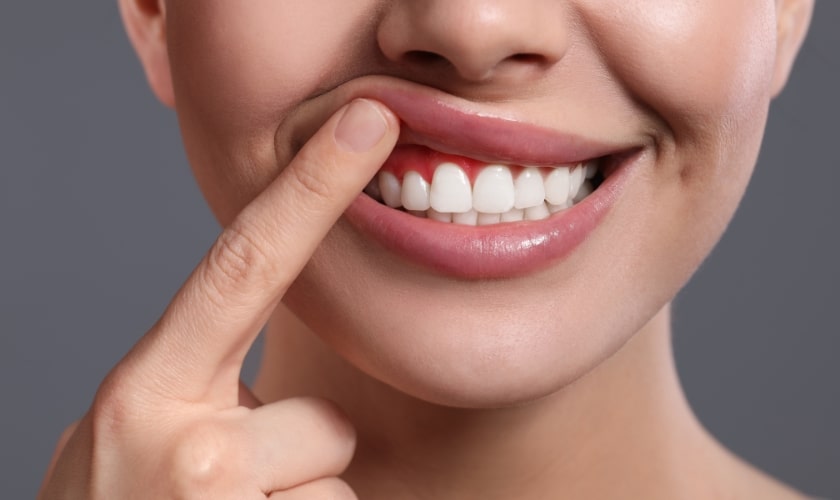
Flossing is a cornerstone of good oral hygiene, diligently removing plaque and food particles that brushing alone can’t reach. But have you ever experienced inflamed gums after a flossing session? This can be a discouraging surprise, leaving you wondering if you’re doing more harm than good. Fear not! While inflamed gums after flossing can occur, understanding the causes and proper techniques can help you achieve a clean and healthy smile without the irritation.
The Importance of Flossing for Oral Health
Flossing plays a pivotal role in maintaining oral hygiene by removing plaque and food particles from areas between teeth and along the gumline that toothbrushes can’t reach. Despite its importance, studies indicate that only a minority of individuals floss regularly. According to the American Dental Association (ADA), only about 16% of Americans floss daily, highlighting a significant gap in oral care practices.
What is Gum Inflammation and Why Does it Happen?
Gum inflammation, also known as gingivitis, is the body’s response to irritation or infection of the gum tissue. When bacteria accumulate along the gumline and between teeth, they can trigger an immune response, leading to redness, swelling, and tenderness of the gums. Flossing, while intended to remove debris and bacteria, can sometimes exacerbate inflammation if not performed correctly or in the presence of underlying gum disease.
Common Causes of Inflamed Gums After Flossing
- Incorrect Flossing Technique: Aggressive or improper flossing techniques can traumatize delicate gum tissue, leading to irritation and inflammation.
- Food Particles and Plaque Buildup: Failure to remove food particles and plaque effectively during flossing can allow bacteria to proliferate, contributing to gum inflammation.
- Sensitivity to Flossing Materials: Some individuals may experience gum irritation due to sensitivity or allergic reactions to flossing materials such as waxed or flavored floss.
- Underlying Gum Disease: In cases of advanced gum disease (periodontitis), flossing can exacerbate inflammation and bleeding due to the presence of deep pockets and tissue damage.
- Medical Conditions: Certain systemic conditions like diabetes or autoimmune disorders can compromise gum health and increase susceptibility to inflammation after flossing.
How to Prevent Inflamed Gums While Flossing
- Practice Gentle Technique: Use a gentle, back-and-forth motion to guide floss between teeth, avoiding forceful or sawing motions that can injure gum tissue.
- Floss Daily: Consistent flossing removes plaque and debris, reducing the risk of gum inflammation and promoting overall oral health.
- Choose the Right Floss: Select floss that suits your preferences and dental needs, whether it’s waxed, unwaxed, flavored, or designed for sensitive gums.
- Maintain Regular Dental Check-ups: Routine dental visits allow your dentist to assess gum health, provide personalized guidance on oral hygiene practices, and address any underlying issues promptly.
- Consider Alternative Cleaning Methods: For individuals with sensitive gums or difficulty flossing, alternative interdental cleaning tools such as interdental brushes or water flossers may be beneficial.
Treatment Options for Inflamed Gums
Treatment for inflamed gums focuses on removing plaque and bacteria, reducing inflammation, and addressing underlying causes. Options may include professional dental cleaning, antimicrobial mouth rinses, prescription medications, and lifestyle modifications.
When to See a Dentist for Inflamed Gums
If you experience persistent or severe gum inflammation despite proper oral hygiene practices, it’s essential to consult your dentist. Additionally, seek prompt dental care if you notice signs of gum disease, such as bleeding gums, persistent bad breath, or changes in gum appearance.
Conclusion
In the intricate dance of oral hygiene, the relationship between flossing and gum health is undeniable. While flossing remains a cornerstone of preventive dental care, understanding the potential causes of inflamed gums after flossing empowers us to navigate this essential practice with confidence. So, as you embark on your journey to optimal oral health, remember to ask yourself: How can I ensure my flossing routine promotes, rather than compromises, the well-being of my gums?
